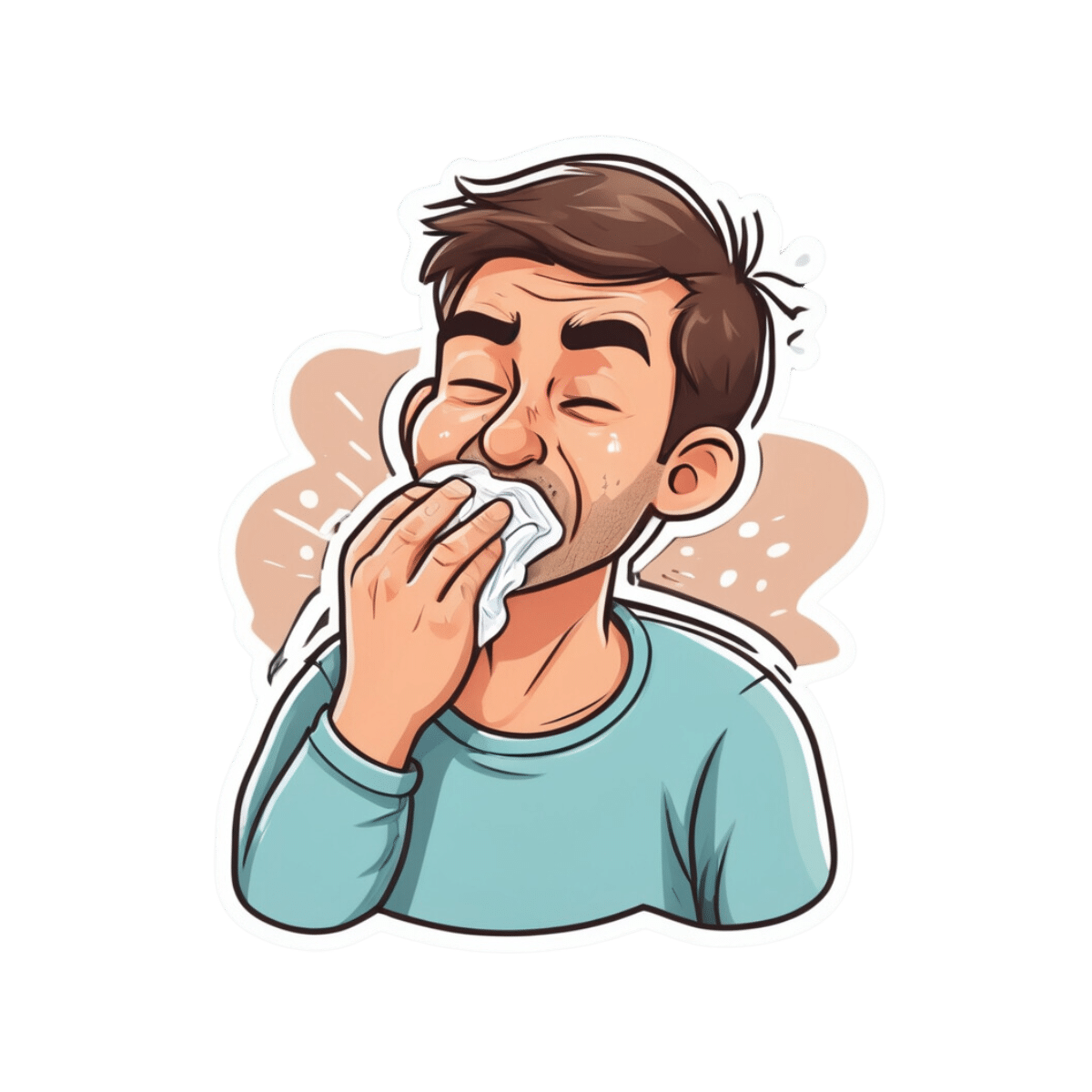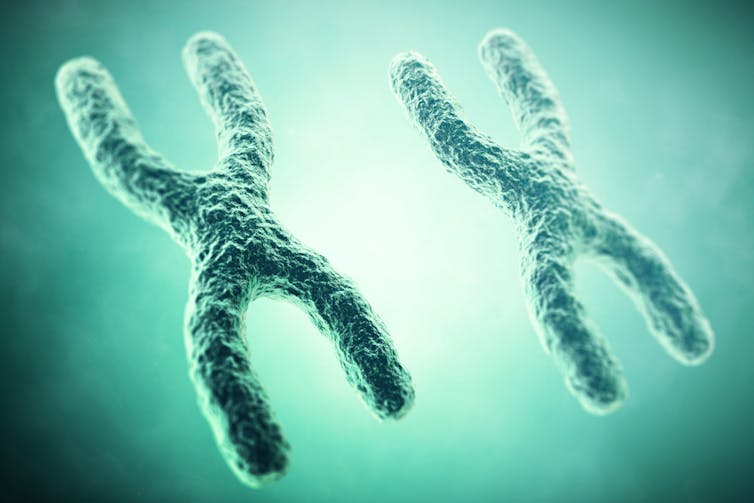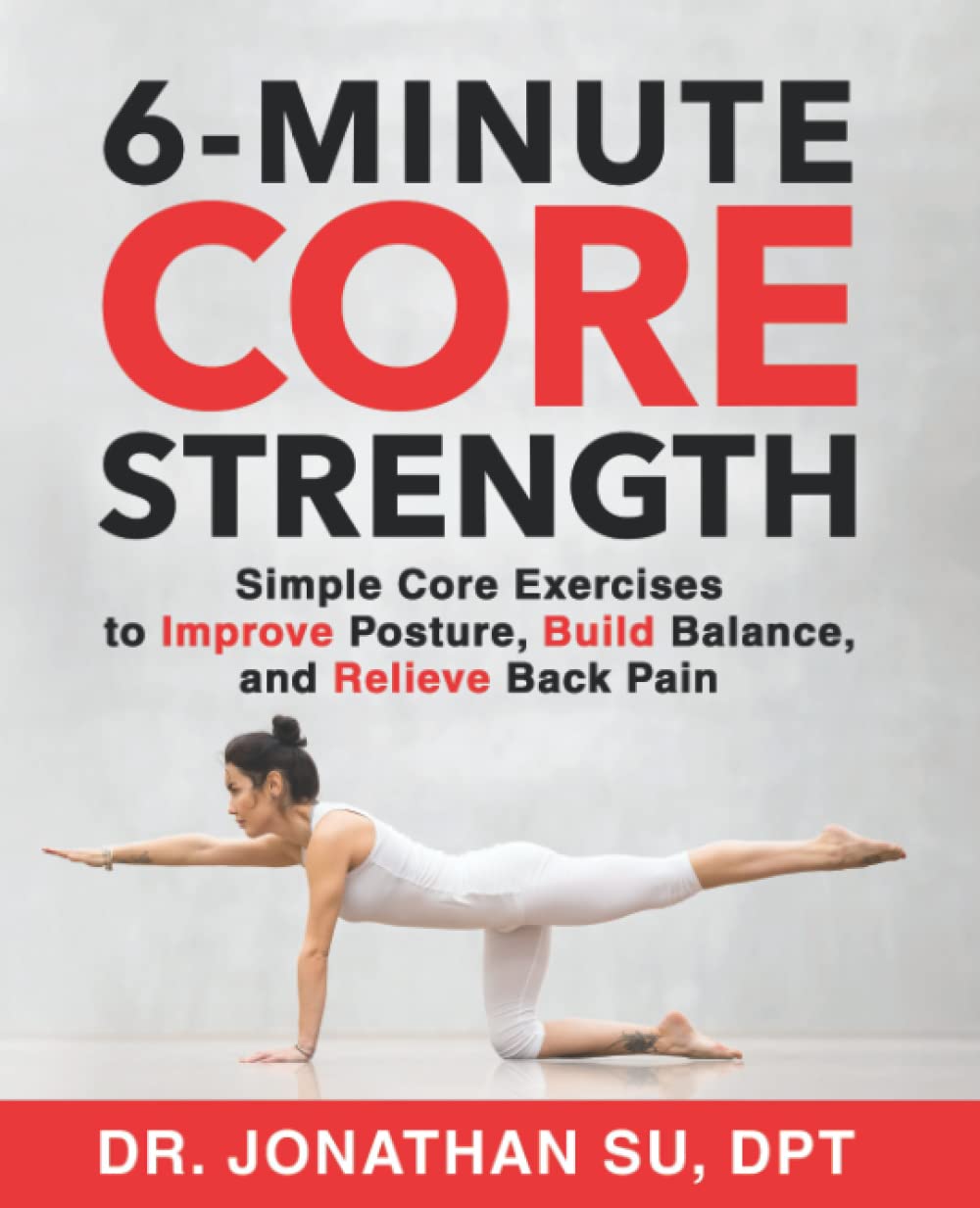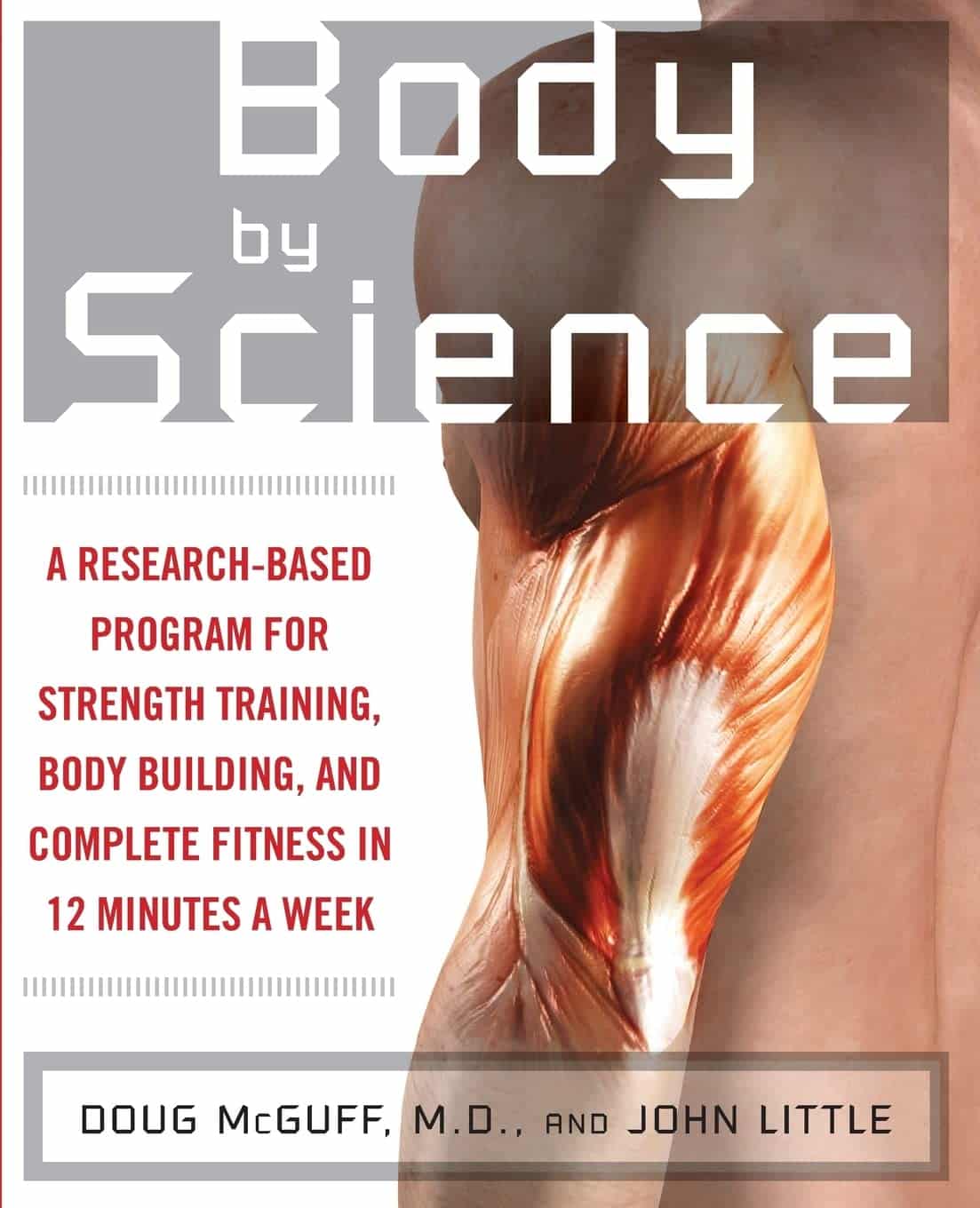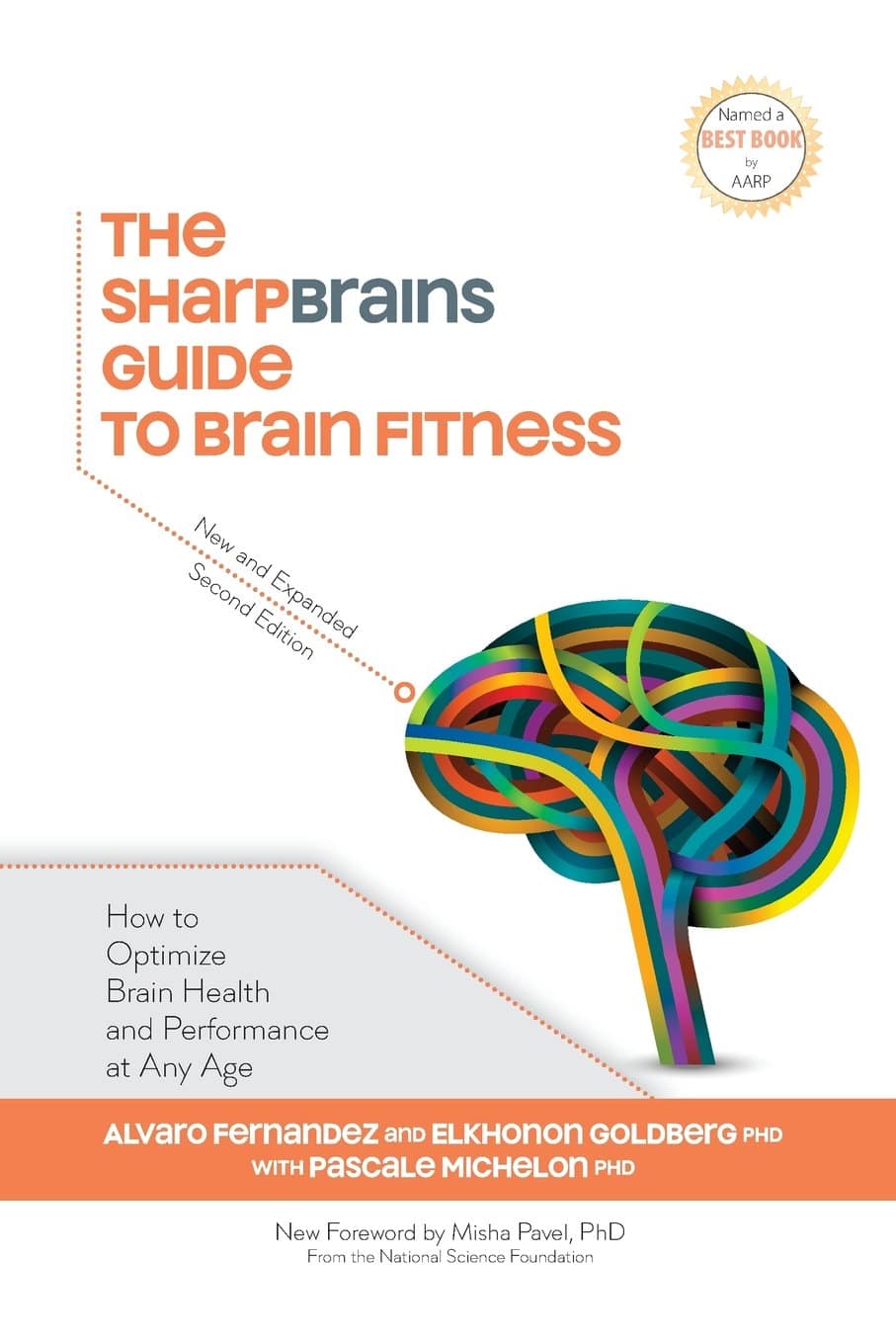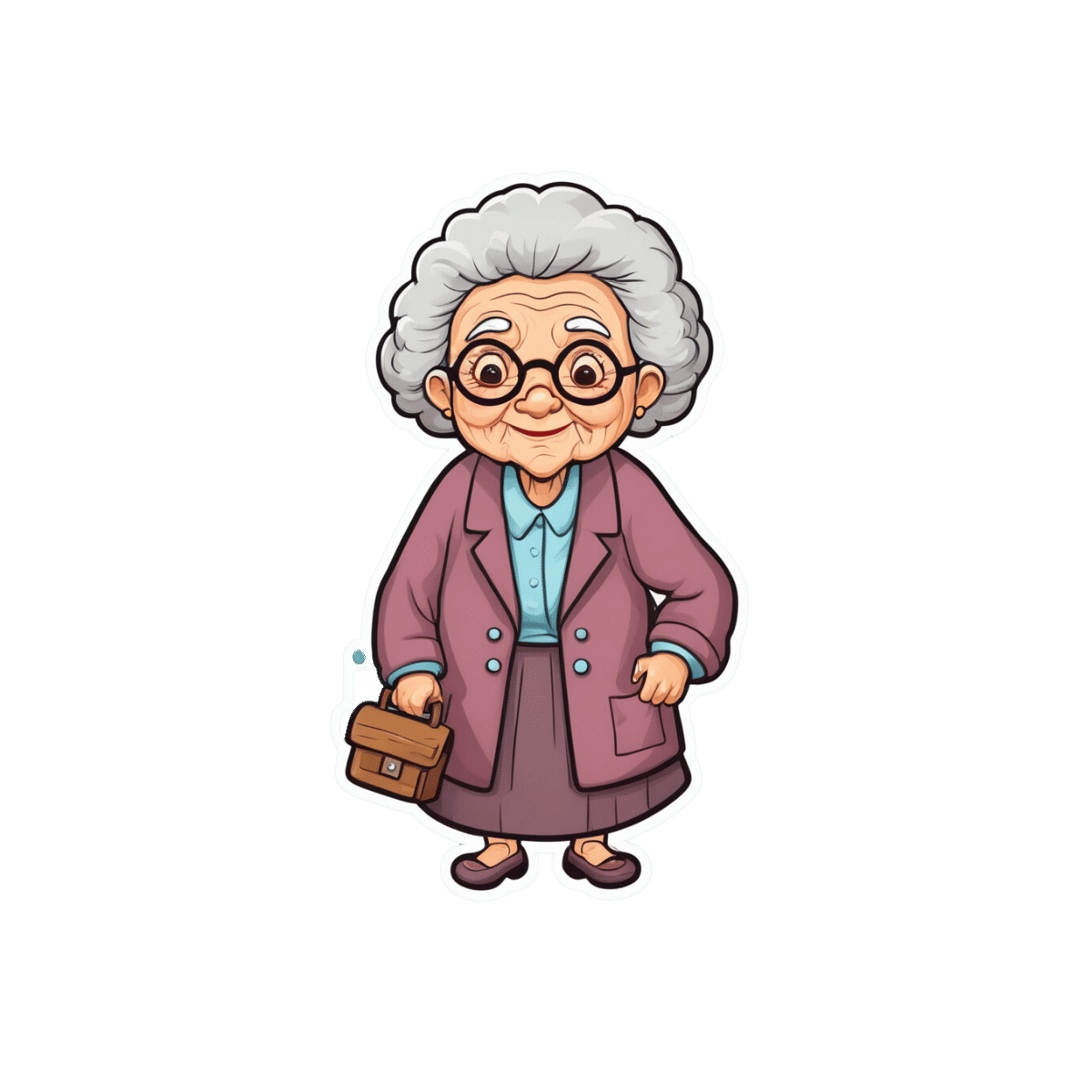
Kettlebell Swings Are Not What Most People Think They Are (They’re Better)
10almonds is reader-supported. We may, at no cost to you, receive a portion of sales if you purchase a product through a link in this article.
Commonly assumed to be mostly a shoulders-and-arms exercise, they’re actually mostly about the hips and core:
From the hips
Correctly executed kettlebell swings primarily strengthens muscles from the hamstrings and glutes the to abs and back; in other words, muscles whose strength is essential for power, posture, and injury prevention.
The core in particular is not to be underestimated, with deep stabilizing muscles supporting posture, balance, and movement. Strengthening these areas can also help reduce lower back pain.
How to do it correctly: start with your feet shoulder-width apart (this is important, if you like having knees) and grip the kettlebell with both hands. Hinge at your hips, lowering the kettlebell between your legs while keeping your back flat and core engaged. Then, drive your hips forward explosively to swing the kettlebell up to shoulder height before allowing it to return down with control. The most common mistake is using the arms to lift the kettlebell, but the real power should come from the hips to maximize benefits and prevent injury.
Example workout: 30 seconds of kettlebell swings followed by 30 seconds of rest, repeated for 10 sets. This 10-minute routine provides a full-body workout that builds strength and endurance. As you progress, you can increase the weight, duration, number of sets, etc.
Timeline of changes: within a few weeks of regular kettlebell swings, you should notice stronger glutes, better endurance, and improved posture. After a month, you may experience reduced lower back pain (if you had lower back pain) and more power in your everyday movements. By two to three months, visible muscle definition and fat loss are likely to become noticeable, along with increased overall strength.
For more on all of this plus visual demonstrations, enjoy:
Click Here If The Embedded Video Doesn’t Load Automatically!
Want to learn more?
You might also like:
Body Sculpting with Kettlebells for Women – by Lorna Kleidman
Take care!
Don’t Forget…
Did you arrive here from our newsletter? Don’t forget to return to the email to continue learning!
Recommended
Learn to Age Gracefully
Join the 98k+ American women taking control of their health & aging with our 100% free (and fun!) daily emails:
-
What’s the difference between ‘man flu’ and flu? Hint: men may not be exaggerating
10almonds is reader-supported. We may, at no cost to you, receive a portion of sales if you purchase a product through a link in this article.
What’s the difference? is a new editorial product that explains the similarities and differences between commonly confused health and medical terms, and why they matter.
The term “man flu” takes a humorous poke at men with minor respiratory infections, such as colds, who supposedly exaggerate their symptoms.
According to the stereotype, a man lies on the sofa with a box of tissues. Meanwhile his female partner, also with a snotty nose, carries on working from home, doing the chores and looking after him.
But is man flu real? Is there a valid biological reason behind men’s symptoms or are men just malingering? And how does man flu differ from flu?
baranq/Shutterstock What are the similarities?
Man flu could refer to a number of respiratory infections – a cold, flu, even a mild case of COVID. So it’s difficult to compare man flu with flu.
But for simplicity, let’s say man flu is actually a cold. If that’s the case, man flu and flu have some similar features.
Both are caused by viruses (but different ones). Both are improved with rest, fluids, and if needed painkillers, throat lozenges or decongestants to manage symptoms.
Both can share similar symptoms. Typically, more severe symptoms such as fever, body aches, violent shivering and headaches are more common in flu (but sometimes occur in colds). Meanwhile sore throats, runny noses, congestion and sneezing are more common in colds. A cough is common in both.
What are the differences?
Flu is a more serious and sometimes fatal respiratory infection caused by the influenza virus. Colds are caused by various viruses such as rhinoviruses, adenoviruses, and common cold coronaviruses, and are rarely serious.
Colds tend to start gradually while flu tends to start abruptly.Flu can be detected with laboratory or at-home tests. Man flu is not an official diagnosis.
Severe flu symptoms may be prevented with a vaccine, while cold symptoms cannot.
Serious flu infections may also be prevented or treated with antiviral drugs such as Tamiflu. There are no antivirals for colds.
OK, but is man flu real?
Again, let’s assume man flu is a cold. Do men really have worse colds than women? The picture is complicated.
One study, with the title “Man flu is not a thing”, did in fact show there were differences in men’s and women’s symptoms.
This study looked at symptoms of acute rhinosinusitis. That’s inflammation of the nasal passages and sinuses, which would explain a runny or stuffy nose, a sinus headache or face pain.
When researchers assessed participants at the start of the study, men and women had similar symptoms. But by days five and eight of the study, women had fewer or less-severe symptoms. In other words, women had recovered faster.
But when participants rated their own symptoms, we saw a somewhat different picture. Women rated their symptoms worse than how the researchers rated them at the start, but said they recovered more quickly.
All this suggests men were not exaggerating their symptoms and did indeed recover more slowly. It also suggests women feel their symptoms more strongly at the start.
Why is this happening?
It’s not straightforward to tease out what’s going on biologically.
There are differences in immune responses between men and women that provide a plausible reason for worse symptoms in men.
For instance, women generally produce antibodies more efficiently, so they respond more effectively to vaccination. Other aspects of women’s immune system also appear to work more strongly.
So why do women tend to have stronger immune responses overall? That’s probably partly because women have two X chromosomes while men have one. X chromosomes carry important immune function genes. This gives women the benefit of immune-related genes from two different chromosomes.
X chromosomes carry important immune function genes. Rost9/Shutterstock Oestrogen (the female sex hormone) also seems to strengthen the immune response, and as levels vary throughout the lifespan, so does the strength of women’s immune systems.
Men are certainly more likely to die from some infectious diseases, such as COVID. But the picture is less clear with other infections such as the flu, where the incidence and mortality between men and women varies widely between countries and particular flu subtypes and outbreaks.
Infection rates and outcomes in men and women can also depend on the way a virus is transmitted, the person’s age, and social and behavioural factors.
For instance, women seem to be more likely to practice protective behaviours such as washing their hands, wearing masks or avoiding crowded indoor spaces. Women are also more likely to seek medical care when ill.
So men aren’t faking it?
Some evidence suggests men are not over-reporting symptoms, and may take longer to clear an infection. So they may experience man flu more harshly than women with a cold.
So cut the men in your life some slack. If they are sick, gender stereotyping is unhelpful, and may discourage men from seeking medical advice.
Thea van de Mortel, Professor, Nursing, School of Nursing and Midwifery, Griffith University
This article is republished from The Conversation under a Creative Commons license. Read the original article.
Share This Post
-
6-Minute Core Strength – by Dr. Jonathan Su
10almonds is reader-supported. We may, at no cost to you, receive a portion of sales if you purchase a product through a link in this article.
We don’t normally do author biographies here, but in this case it’s worth noting that Dr. Su is a physiotherapist, military rehab expert, and an IAYT yoga therapist. So, these things together certainly do lend weight to his advice.
About the “6-minute” thing: this is in the style of the famous “7-minute workout” and “5 Minutes’ Physical Fitness” etc, and refers to how long each exercise session should take. The baseline is one such session per day, though of course doing more than one set of 6 minutes each time is a bonus if you wish to do so.
The exercises are focused on core strength, but they also include hip and shoulder exercises, since these are after all attached to the core, and hip and shoulder mobility counts for a lot.
A particular strength of the book is in troubleshooting mistakes of the kind that aren’t necessarily visible from photos; in this case, Dr. Su explains what you need to go for in a certain exercise, and how to know if you are doing it correctly. This alone is worth the cost of the book, in this reviewer’s opinion.
Bottom line: if you want core strength and want it simple yet comprehensive, this book can guide you.
Click here to check out 6-Minute Core Strength, and strengthen yours!
Share This Post
-
Body by Science – by Dr. Doug McGuff & John Little
10almonds is reader-supported. We may, at no cost to you, receive a portion of sales if you purchase a product through a link in this article.
The idea that you’ll get a re-sculpted body at 12 minutes per week is a bold claim, isn’t it? Medical Doctor Doug McGuff and bodybuilder John Little team up to lay out their case. So, how does it stand up to scrutiny?
First, is it “backed by rigorous research” as claimed? Yes… with caveats.
The book uses a large body of scientific literature as its foundation, and that weight of evidence does support this general approach:
- Endurance cardio isn’t very good at burning fat
- Muscle, even just having it without using it much, burns fat to maintain it
- To that end, muscle can be viewed as a fat-burning asset
- Muscle can be grown quickly with short bursts of intense exercise once per week
Why once per week? The most relevant muscle fibers take about that long to recover, so doing it more often will undercut gains.
So, what are the caveats?
The authors argue for slow reps of maximally heavy resistance work sufficient to cause failure in about 90 seconds. However, most of the studies cited for the benefits of “brief intense exercise” are for High Intensity Interval Training (HIIT). HIIT involves “sprints” of exercise. It doesn’t have to be literally running, but for example maxing out on an exercise bike for 30 seconds, slowing for 60, maxing out for 30, etc. Or in the case of resistance work, explosive (fast!) concentric movements and slow eccentric movements, to work fast- and slow-twitch muscle fibers, respectively.
What does this mean for the usefulness of the book?
- Will it sculpt your body as described in the blurb? Yes, this will indeed grow your muscles with a minimal expenditure of time
- Will it improve your body’s fat-burning metabolism? Yes, this will indeed turn your body into a fat-burning machine
- Will it improve your “complete fitness”? No, if you want to be an all-rounder athlete, you will still need HIIT, as otherwise anything taxing your under-worked fast-twitch muscle fibers will exhaust you quickly.
Bottom line: read this book if you want to build muscle efficiently, and make your body more efficient at burning fat. Best supplemented with at least some cardio, though!
Click here to check out Body by Science, and get re-sculpting yours!
Share This Post
Related Posts
-
The SharpBrains Guide to Brain Fitness – by Alvaro Fernandez et al.
10almonds is reader-supported. We may, at no cost to you, receive a portion of sales if you purchase a product through a link in this article.
We say “et al.” in the by-line, because this one has a flock of authors, including Dr. Pascale Michelon, Dr. Sandra Bond Chapman, Dr. Elkehon Goldberg, and various others if we include the foreword, introduction, etc.
This is relevant, because those who contributed to the meat of the book (i.e., those listed above), it makes the work a lot more scientifically reliable; one skilled science writer might make a mistake; it’s much less likely to make it through to publication when there are a bevy of doctors in the mix, each staking their reputation on the book’s content, and thus having a vested interest in checking each other’s work as well as their own.
As for what this multidisciplinary team have to offer? The book covers such things as:
- how the brain works (especially the possibilities of neuroplasticity), and what that means for such things as memory and attention
- being “a coach not a patient”; i.e., being active rather than passive in one’s approach to brain health
- the relevance of physical exercise, how much, and what kind
- the relevance (and limitations) of diet choices for brain health
- the relevance of such things as learning new languages and musical training
- the relevance of social engagement, and how some (but not all) social engagement can boost cognition
- methods for managing stress and building resilience to same (critical for maintaining a healthy brain)
- “cross-fit for your brain”, that is to say, a multi-vector collection of tools to explore, ranging from meditation to CBT to biofeedback and more.
The style is pop-science without being sensationalist, just communicating ideas clearly, with enough padding to feel casual, and not like a dense read. Importantly, it’s also practical and applicable too, which is something we always look for here.
Bottom line: if you’d like to be given a good overview of what things work (and how much they can be expected to work), along with a good framework to put that knowledge into practice, then this is a great book for you.
Don’t Forget…
Did you arrive here from our newsletter? Don’t forget to return to the email to continue learning!
Learn to Age Gracefully
Join the 98k+ American women taking control of their health & aging with our 100% free (and fun!) daily emails:
-
A drug that can extend your life by 25%? Don’t hold your breath
10almonds is reader-supported. We may, at no cost to you, receive a portion of sales if you purchase a product through a link in this article.
Every few weeks or months, the media reports on a new study that tantalisingly dangles the possibility of a new drug to give us longer, healthier lives.
The latest study centres around a drug involved in targeting interleukin-11, a protein involved in inflammation. Blocking this protein appeared to help mice stave off disease and extend their life by more than 20%.
If only defying the ravages of time could be achieved through such a simple and effort-free way – by taking a pill. But as is so often the case, the real-world significance of these findings falls a fair way short of the hype.
Halfpoint/Shutterstock The role of inflammation in disease and ageing
Chronic inflammation in the body plays a role in causing disease and accelerating ageing. In fact, a relatively new label has been coined to represent this: “inflammaging”.
While acute inflammation is an important response to infection or injury, if inflammation persists in the body, it can be very damaging.
A number of lifestyle, environmental and societal drivers contribute to chronic inflammation in the modern world. These are largely the factors we already know are associated with disease and ageing, including poor diet, lack of exercise, obesity, stress, lack of sleep, lack of social connection and pollution.
While addressing these issues directly is one of the keys to addressing chronic inflammation, disease and ageing, there are a number of research groups also exploring how to treat chronic inflammation with pharmaceuticals. Their goal is to target and modify the molecular and chemical pathways involved in the inflammatory process itself.
What the latest research shows
This new interleukin-11 research was conducted in mice and involved a number of separate components.
In one component of this research, interleukin-11 was genetically knocked out in mice. This means the gene for this chemical mediator was removed from these mice, resulting in the mice no longer being able to produce this mediator at all.
In this part of the study, the mice’s lives were extended by over 20%, on average.
Another component of this research involved treating older mice with a drug that blocks interleukin-11.
Injecting this drug into 75-week old mice (equivalent to 55-year-old humans) was found to extend the life of mice by 22-25%.
These treated mice were less likely to get cancer and had lower cholesterol levels, lower body weight and improved muscle strength and metabolism.
From these combined results, the authors concluded, quite reasonably, that blocking interleukin-11 may potentially be a key to mitigating age-related health effects and improving lifespan in both mice and humans.
Why you shouldn’t be getting excited just yet
There are several reasons to be cautious of these findings.
First and most importantly, this was a study in mice. It may be stating the obvious, but mice are very different to humans. As such, this finding in a mouse model is a long way down the evidence hierarchy in terms of its weight.
Research shows only about 5% of promising findings in animals carry over to humans. Put another way, approximately 95% of promising findings in animals may not be translated to specific therapies for humans.
Second, this is only one study. Ideally, we would be looking to have these findings confirmed by other researchers before even considering moving on to the next stage in the knowledge discovery process and examining whether these findings may be true for humans.
We generally require a larger body of evidence before we get too excited about any new research findings and even consider the possibility of human trials.
Third, even if everything remains positive and follow-up studies support the findings of this current study, it can take decades for a new finding like this to be translated to successful therapies in humans.
Until then, we can focus on doing the things we already know make a huge difference to health and longevity: eating well, exercising, maintaining a healthy weight, reducing stress and nurturing social relationships.
Hassan Vally, Associate Professor, Epidemiology, Deakin University
This article is republished from The Conversation under a Creative Commons license. Read the original article.
Don’t Forget…
Did you arrive here from our newsletter? Don’t forget to return to the email to continue learning!
Learn to Age Gracefully
Join the 98k+ American women taking control of their health & aging with our 100% free (and fun!) daily emails:
-
Everything you need to know about cervical cancer
10almonds is reader-supported. We may, at no cost to you, receive a portion of sales if you purchase a product through a link in this article.
Every year, around 11,500 new cases of cervical cancer are diagnosed in the U.S. While cervical cancer used to be one of the most common causes of cancer death for U.S. women, the vaccine against the human papillomavirus (HPV), and increased early screening and detection have resulted in a decrease in rates.
“Cervical cancer is almost always preventable and typically diagnosed in patients who have either never had a screening test or have gone many years without one,” says Fred Wyand, director of communications at the American Sexual Health Association, which includes the National Cervical Cancer Coalition.
January is Cervical Cancer Awareness Month, so we spoke to experts to learn more about what it is, its symptoms, and what you can do to prevent it.
What is cervical cancer?
Cervical cancer is a type of cancer that starts in the cervix—the lower part of the uterus that connects the vagina to the uterus. Cervical cancer can affect anyone with a cervix but is most frequently diagnosed in women ages 35 to 44, according to the American Cancer Society.
There are two types:
- Squamous cell carcinoma: Cervical cancer that starts in the thin squamous cells on the outside of the cervix. This is the most common type of cervical cancer.
- Adenocarcinoma: Cervical cancer that starts in glandular cells that line the inside of the cervix. This type of cervical cancer is less common.
In some cases, cervical cancer has features of both types.
What causes cervical cancer?
Almost all cases of cervical cancer are caused by high-risk cases of HPV, a virus that is spread through sexual activity or other close skin-to-skin contact. But don’t panic: HPV is very common, and getting HPV doesn’t always mean you’ll get cervical cancer. Around 85 percent of people in the U.S. will get an HPV infection in their lifetime, but for most people, the virus clears on its own.
However, there are many strains of HPV, and some are linked to cervical cancer. In those cases, when the virus does not clear on its own and the HPV infection persists, it can cause a range of cancers in both men and women, including cancers of the cervix, anus, penis, throat, and vagina.
That’s why HPV vaccination is so important for all people: It can help prevent many types of cancer, including cervical cancer caused by those high-risk HPV infections.
What are the symptoms of cervical cancer?
Cervical cancer doesn’t usually have symptoms in its early stages, but once cancer begins to spread, the symptoms can include:
- Vaginal bleeding between periods, after sexual intercourse, or after menopause.
- Heavier and longer menstrual periods than usual.
- Vaginal discharge that has a strong odor and is watery.
- Pelvic pain or pain during sexual intercourse.
In more advanced stages, symptoms of cervical cancer can include:
- Leg swelling.
- Difficult or painful bowel movements or bleeding during a bowel movement.
- Blood in urine or difficulty urinating.
- Back pain.
“Most women present with no symptoms,” Dr. Kristina A. Butler, gynecologic oncologist at Mayo Clinic, tells PGN. “Therefore, the checkups with visualization of the cervix, speaking with your provider, and having a Pap smear are so important.”
How can you help prevent or reduce your risk for cervical cancer?
Vaccination: Cervical cancer is highly preventable. The most effective way to help protect yourself from it is by getting the HPV vaccine. The HPV vaccine is most effective before a person is first exposed to HPV, typically before becoming sexually active.
“If we are able to vaccinate children before they become adults [and] are subsequently exposed, those individuals are maximally protected against the [worst effects] of the virus, which could ultimately be cancer,” Butler adds.
You’re eligible to get the vaccine if you’re between 9 and 45 years old, but there are specific guidelines for each age group. The Centers for Disease Control and Prevention recommends HPV vaccination for children ages 11 or 12 (though it can start at 9 years).
The CDC says that you can get catch-up doses until you’re 26 if you didn’t get vaccinated earlier, but if you’re between 26 and 45 years old, you should talk to your health care provider about your individual risk for HPV and to see if you should get the vaccine.
Screenings: This is another effective way to prevent cervical cancer.
Dr. Deanna Gerber, a gynecologic oncologist at NYU Langone’s Laura and Isaac Perlmutter Cancer Center, tells PGN that regular screenings can catch HPV before it has a chance to become cancer.
“Now that we’re encouraging people to see their gynecologist and get screening more regularly, we’re catching cancer at earlier stages,” she says.
Screenings for cervical cancer include:
- Pap smear: During a Pap smear, also known as a Pap test, cells are collected from your cervix to find precancerous or cervical cancer cells. Pap smears should start at 21 years old, regardless of when you start having sex.
If you’re between 21 and 29, you should get a Pap smear every three years. If you’re 30 to 65 years old, it’s recommended you get one every three years, a Pap and HPV test together every five years, or an HPV test alone every five years.
- HPV test: During an HPV test, cells are collected from your cervix to look for infection with high-risk HPV strains that can cause cervical cancer. If you’re between 21 and 30 years old, it’s only recommended that you get an HPV test if you had an abnormal Pap smear result. After 30, an HPV test is recommended with a Pap smear every five years, as long as other results were normal.
(People over 65 years old should talk to their health care provider about whether they need screening.)
Not smoking: Avoiding smoking can reduce your risk of developing cervical cancer because “HPV and smoking tobacco work together to accelerate the negative effects of HPV,” says Gerber.
Wearing condoms: Although condoms don’t completely prevent HPV infection, they provide some protection. And according to the CDC, the use of condoms has been associated with a lower rate of cervical cancer.
There is hope with early detection
There is hope for people diagnosed with cervical cancer. “Compared to the survival [rates] 10 years ago, women survive much longer now with the great treatments we have,” adds Butler.
Some of those treatments and advances include radiation, chemotherapy, and surgical therapy.
And while there may be some stigma surrounding sexual health, it’s important to advocate for yourself, says Gerber.
“Being comfortable and bold talking to your doctor about your health or any concerns that you have, feeling comfortable with your provider by asking all these questions is really the best thing you can do.”
For more information, talk to your health care provider.
This article first appeared on Public Good News and is republished here under a Creative Commons license.
Don’t Forget…
Did you arrive here from our newsletter? Don’t forget to return to the email to continue learning!
Learn to Age Gracefully
Join the 98k+ American women taking control of their health & aging with our 100% free (and fun!) daily emails:


